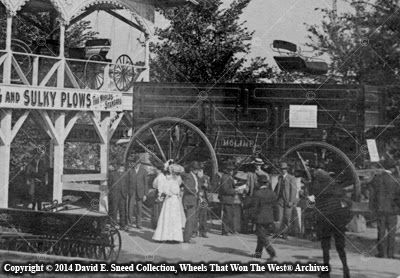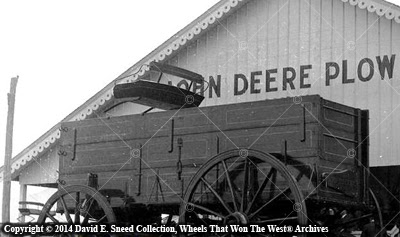We live in a world that demands predictability. From driving on the correct side of the road to timely arrival at work, we depend on things to run like clockwork. Over and over, though, I've shared about the random, almost wild unpredictability of making discoveries when researching early history. As most can imagine, it's hard to know when an important find is going to show up. That said, the belief that real answers do await is what motivates a researcher to move forward. With quiet confidence, any seeker knows that, somewhere out there, important information is waiting to be uncovered; and, with those encounters, there is potential for greater understanding of our past along with even more excitement in the present and future.
It's a pursuit that may require decades or more to uncover the smallest details. Then again, lightning can strike and, suddenly, the pieces of a century-old puzzle can come together, no longer separated. That scenario has happened over and over again as we've embraced the uncertainties of research for our Wheels That Won The West® Archives. To that point, in my January 8th blog, I shared my belief that the Giant Moline wagon was likely used in a promotional tour after it's unveiling at the 1904 World's Fair in St. Louis. That best-guess was prompted by the discovery a few months ago of a rare image of the same wagon shown at a circa 1905 exhibit for John Deere at a Minneapolis fair.
 |
| The Giant Moline Wagon at the Minneapolis Fair |
Little could I have known that in less than a month from this January's blog, I would come across yet another - different image of the same wagon. Even better, it wasn't just one - but two period photos, each showing different angles of this same wagon. The extraordinary images are labeled as having been taken in 1906 - two years after the giant wagon's promotional debut in St. Louis.
Clearly, the Moline brand (Moline, IL) and John Deere made the most of this impressive set of wheels with a promotional tour that lasted years. This time the mammoth wagon was being shown at another major fair in Lincoln, Nebraska. Below is a small section that we've cropped from one of the photos. Standing atop a banner-draped wooden stage, this head-turning, wooden mega-star is surrounded by other standard-sized wagons available for purchase. With the passing of more than a century since it was last seen, there are few answers as to what ultimately happened to this wagon. It's doubtful that any part has survived but finding these old images has brought new life to a story while offering hope that more details may one day be found. Through these new revelations, we can see John Deere significantly ramping up their involvement with wagons. After decades of selling the Moline brand, by 1910, Deere had bought the company and - by 1912 - had renamed it the John Deere Wagon Company.

The Giant Moline at the Lincoln, Nebraska Fair - 1906
Among our other discoveries of late is a photo of an 1880's-era freight wagon showing a different type of hitch for a trail wagon. While most tall-sided western freighters will have a horn and bumper design at the rear of the wagon, this California train is designed with a more rigid concept. It's one more period record in our files that may help identify, authenticate, and interpret the originality of future finds. Certainly, it's a rarely seen configuration but one poised to shed even more light onto early western transportation.
Thanks for stopping by!
David